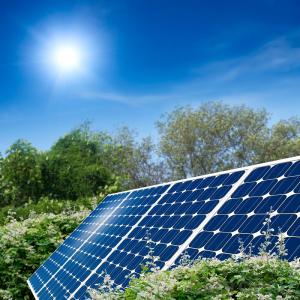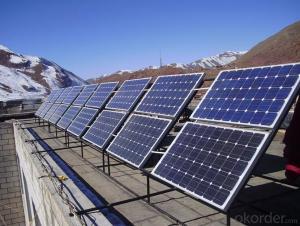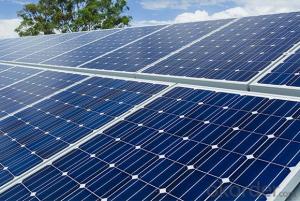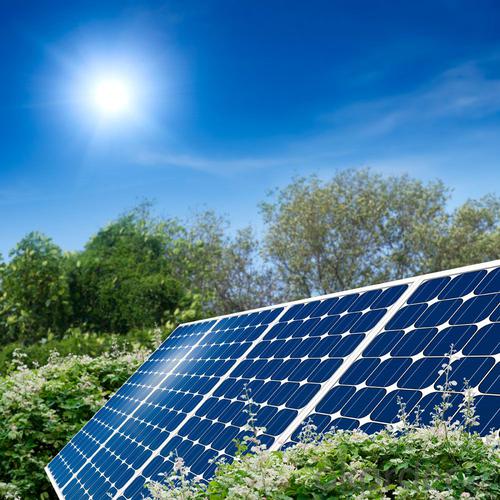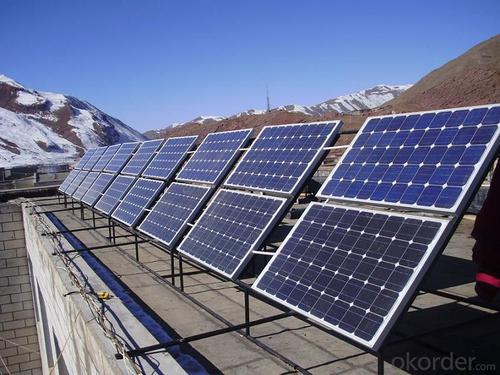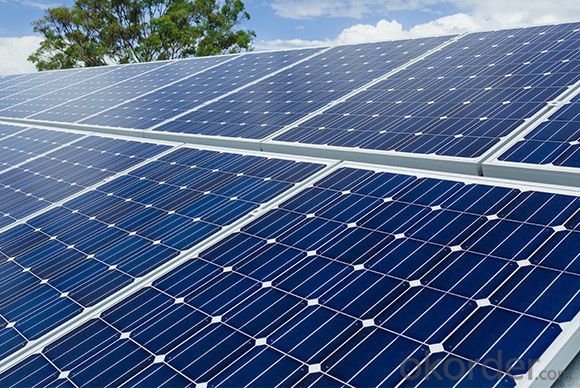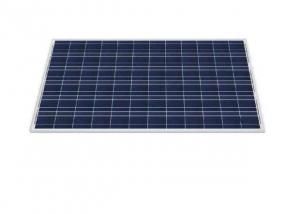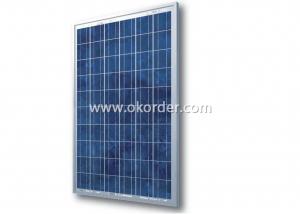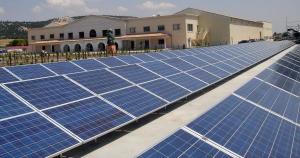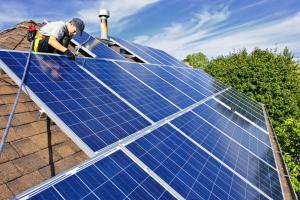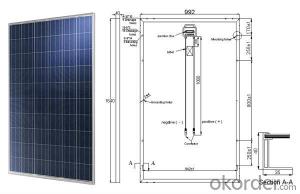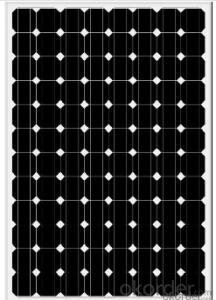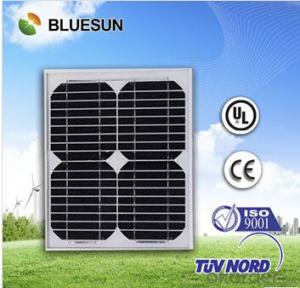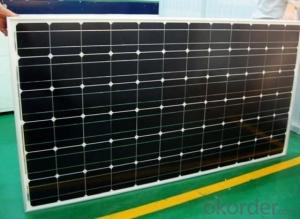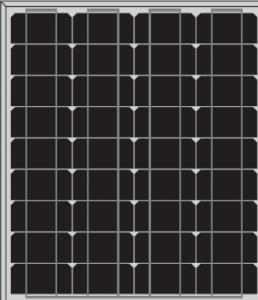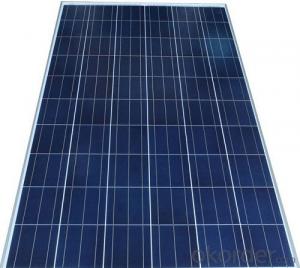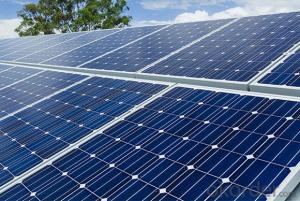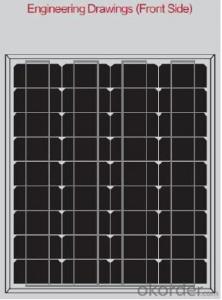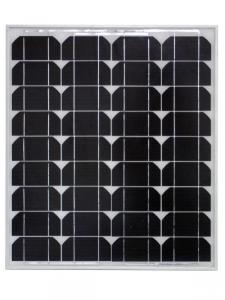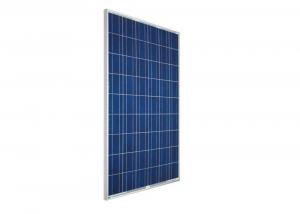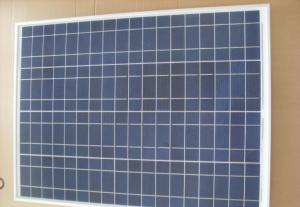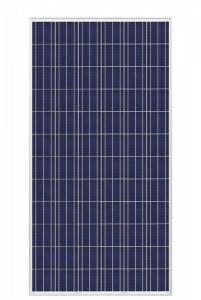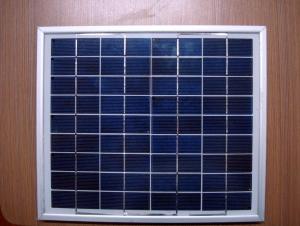Solar Panels Louisiana - CNBM Solar Monocrystalline 125mm Series (45W-50W)
- Loading Port:
- Shanghai
- Payment Terms:
- TT OR LC
- Min Order Qty:
- 100000 watt
- Supply Capability:
- 10000000 watt/month
OKorder Service Pledge
OKorder Financial Service
You Might Also Like
Product Description:
Mono-crystalline Solar Module Description:
Mono-crystalline solar moduleis the core part of solar power systems, as well as the most important part of the solar system. Mono-crystalline solar module consists of high efficiency crystalline silicon solar cell, super white cloth grain toughened glass, EVA, transparent TPT backboard and the composition of aluminum alloy frame. The function of Mono-crystalline solar module is to convert solar energy into electric energy, or sent to the storage battery, or promote work load. The quality of the solar energy battery components and cost will directly decide the quality and cost of the whole system.
Components
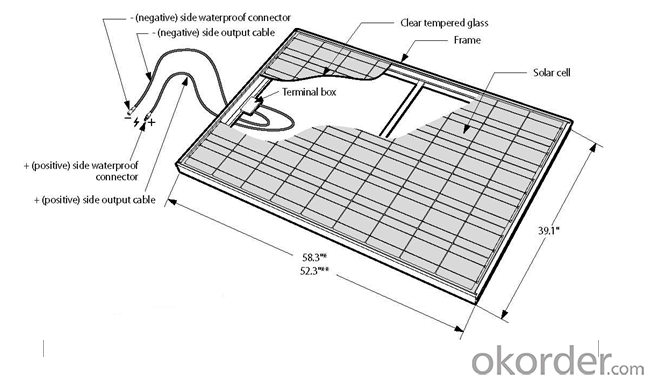
Data sheet
| Characteristics | |
| Max Power Voltage Vmp (V) | 17.4V-17.8V |
| Max Power Current Imp (A) | 2.59A-2.81A |
| Open Circuit Voltage Voc (V) | 22.4V-22.6V |
| Short Circuit Current Isc (A) | 2.75A-2.99A |
| Max Power Pm (W) | 45W-50W |
| Temperature Coefficient of Cells | |
| NOCT | 47℃±2℃ |
| Temperature Coefficients of Isc (%/℃) | 0.06% |
| Temperature Coefficients of Voc (%/℃) | -0.33% |
| Temperature Coefficients of Pmp (%/℃) | -0.45% |
| Mechanical Data | |
| Type of Cells (mm) | Mono125×62.5 |
| Dimension | 630×550×30mm |
| Weight | 4.5kg |
| NO.of Cells and Connections | 4×9=36 |
| Limits | |
| Operating Temperature | –45°C to +80°C |
| Storage Temperature | –45°C to +80°C |
| Max System Voltage | 700V |
FAQ:
1. How long will my inquiry get response?
Your inquiry related to our products or prices will be replied within 24 hours.
2. Can I get professional service and suggestion?
Well-trained and experienced staffs to answer all your questions in fluent English.
3. Do you accept OEM or customized design?
OEM & ODM, any your customized lightings we can help you to design and put into product.
4. What if I need specific design?
Distributorship are offered for your unique design and some our current models.
- Q: Can solar panels be used in areas with high humidity?
- Yes, solar panels can be used in areas with high humidity. While high humidity may affect the efficiency of solar panels to some extent, they can still generate electricity. The performance of solar panels in humid environments can be optimized by using materials that are resistant to moisture and by ensuring proper installation and maintenance.
- Q: Hi.How efficienent are solar panels? I mean, suppose we install a kw panel.. Wil it produce 5kw in 5 hours of good sun light?Or like if its 80 percent efficient, wil it produce 4kw and so on.Also, do the chinese solar panels give the same results as compared with panels from other countries?I live in india, so we get plenty of sunlight during the day.Thanks
- The Sunforce 50048 60-Watt solar charging kit is designed as an “out of the box” solution to your solar power needs.The Sunforce 50048 60-Watt Solar Charging Kit gives you several more reasons to love the sun.It provides the power you need, while helping you save money and protect the environment. This kit is ideal for cabins, recreational vehicles, remote power, back-up power, and 2-volt battery charging. It comes with everything you need to start producing up to 60 Watts/4 Amps of clean, free power in all weather conditions.
- Q: Are solar panels durable?
- Yes, solar panels are generally durable. They are designed to withstand harsh weather conditions, such as rain, snow, and wind. Additionally, they have a long lifespan, typically ranging from 25 to 30 years. However, the durability may vary depending on the quality of the panels and the installation process.
- Q: Can solar panels be installed on swimming pools?
- Yes, solar panels can be installed on swimming pools. Solar panels can help to power pool pumps, heaters, and other equipment, reducing energy costs and making pools more energy-efficient.
- Q: Rated in kilowatts, what is the maximum output of one 8 by 0 solar panel? Assume this solar panel is located at the equator for maximum sunlight.
- 8 by 0 what? inches, feet, meters??
- Q: Can solar panels be damaged by hail or other elements?
- Yes, solar panels can be damaged by hail or other elements. Hailstones can cause cracks or dents in the panels, impairing their functionality. Other elements like heavy rain, strong winds, or debris from storms can also potentially damage solar panels. However, most solar panels are designed to withstand typical weather conditions and are often tested for durability.
- Q: I have to show in a project (a model house) how Solar Panels work. In my model I want to show Solar Panels creating electricity to power a T.V but I need to show how the power gets from the Solar Panels to the T.V. A diagram would be really helpful. Please try and make this as simple as possible as I'm only 3, but try and be specific as well!
- How photograph voltaic Cells artwork by applying Scott Aldous interior this text a million. creation to How photograph voltaic Cells artwork 2. Photovoltaic Cells: changing Photons to Electrons 3. How Silicon Makes a photo voltaic cellular 4. Anatomy of a photo voltaic cellular 5. capability Loss in a photo voltaic cellular 6. photograph voltaic-powering a house 7. fixing photograph voltaic-capability themes 8. photograph voltaic-capability execs and Cons 9. lots extra counsel 0. See all actual technological know-how articles you have in all probability seen calculators that have photograph voltaic cells -- calculators that on no account want batteries, and at times do no longer even have an off button. as long as you have adequate gentle, they seem to artwork perpetually. you have seen bigger photograph voltaic panels -- on emergency street signs and indications or call boxes, on buoys, even in parking lots to capability lighting fixtures fixtures. besides the undeniable fact that those bigger panels are not as elementary as photograph voltaic powered calculators, they're available, and not that problematic to discover in case you realize the place to look. There are photograph voltaic cellular arrays on satellites, the place they're used to capability the electrical powered structures. you have in all probability additionally been listening to appropriate to the photograph voltaic revolution for the final twenty years -- the concept sooner or later we can all use loose electrical energy from the solar. this is a seductive promise: On a superb, sunny day, the solar shines approximately a million,000 watts of capability in line with sq. meter of the planet's floor, and if shall we convey mutually all of that capability shall we quite capability our residences and places of work for loose.
- Q: want to run 400 watt heater 8 hrs a day how many solar panels do i need and batteries
- Get the rating from the manufacturer, they will give you the watts per m2 of their panels. divide 400 into the rating and will have the total area, then get the area of the panel that physically fits better the project and divide the total area into that of the panel selected, you will have how many panels you need. For the batteries is more complicated because of the available light hours of your location and what time of day are you going to use the heater, to be safe make a bank of batteries to store 600 watts to have a 50% stored power for emergency
- Q: i was reading the popular science magazine and i saw that they might make a Sun Powered it Absolutely NOT possible to make a car with a Solar Panel? I dont see any harm in making it..
- Sailboats typically run on wind; hence, Sailboat. I haven't read your article on it though; but, I would think that the solar power would be for the battery powered stuff and possibly a little motor for it. For a car... There are competitions, right now for solar cars. Only they are very light and don't really go that fast. The panels tend to be large and weight a bit more than one would think. I don't understand why they can't simply make a car generate power simply by the rotation of the wheels itself. They could take a hybrid, take out the gasoline portion and it would simply recharge the batteries by the friction of the turning wheels.
- Q: does anybudy know about solar panels? plz reply me
- Solar panels, often connected to other panels to form an array will produce electricity when exposed to the sun. At this time solar panel is one of the fastest growing business in the world. Given the fact that most of our energy comes from fossil fuels (Oil, Natural Gas and Coal) and that those resources are getting used up and more expensive to get to, and given the fact that solar panels are getting cheaper and more efficient, eventually, the electricity produced by solar panels (or photovoltaic panels as they are sometime called, PV for short) will be cheaper than that of CO2 spewing electrical plants. Actually, it could be argued that if the coal, natural gas and oil industry was not subsidized so much by our governments, and if you demanded that the process of producing electricity from those sourced be as clean as PV, PV would be a cheaper source of electricity than fossil fuel already. Make sure to also look into the solar panels that produce hot water. SHW (Solar Hot Water) is very developed in country such as Israel, where the law demands that all new house be build with SHW systems. Those panels are very efficient at capturing the heat of the sun and produce hot water much cheaper over their life than using gas or electricity.
Send your message to us
Solar Panels Louisiana - CNBM Solar Monocrystalline 125mm Series (45W-50W)
- Loading Port:
- Shanghai
- Payment Terms:
- TT OR LC
- Min Order Qty:
- 100000 watt
- Supply Capability:
- 10000000 watt/month
OKorder Service Pledge
OKorder Financial Service
Similar products
Hot products
Hot Searches
Related keywords
